Saturday, February 4, 2017
1972-73 New England Whalers Rick Ley Jersey
With the New England Patriots competing in tomorrow's Super Bowl, we thought we would take a look at another team named for New England, the New England Whalers of the World Hockey Association.
To stock their roster for the inaugural WHA season, the Whalers signed veteran Ted Green away from the Bruins to be the team's first captain.
Coach Jack Kelley and team captain Ted Green
They also lured 30 goal scorer Tom Webster away from the California Golden Seals, whose owner Charlie O. Finley refused to open the checkbook to keep several of his better players when the WHA came to raid his roster.
Rick Ley of the Toronto Maple Leafs was called upon to anchor the team's defense in front of former Pittsburgh Penguins and Detroit Red Wings goaltender Al Smith, who would eventually serve two terms with the Whalers.
The Whalers were forced to be creative in assembling the rest of their roster, as 12 WHA teams were seeking to employ roughly 250 professional players in all. Additionally, the NHL had also expanded by two clubs that season in an attempt to occupy markets the WHA might have found attractive, placing clubs on Long Island in New York and Atlanta, Georgia, meaning in actuality, 275 more players would be needed to stock an additional 14 combined rosters than the season before.
The tactic taken by the Whalers was to embrace the often overlooked American player, signing former US Olympic Hockey Team members, particularly those with ties to Boston. Larry Pleau (a Boston native) was lured away from the Montreal Canadiens, Kevin Ahearn, John Cunniff, Paul Hurley and Tim Sheehy, who all played for Boston College, and Tommy Williams, who had played for the Bruins were recruited to join the Whalers inaugural roster.
Larry Pleau scores the game winning goal against #00 Bernie Parent of Philadelphia during the Whalers first game
Jack Kelley, who had just won back to back national titles with Boston University in 1971 and 1972, was hired to coach the team. Additionally, Canadians John Danby and Ric Jordan, both of whom were members of Kelley's national championship winning Terriers, joined the Whalers along with their head coach.
The Whalers began play located in Boston, Massachusetts, dividing their home games between the Boston Arena and the Boston Garden, which was the traditional home of the Boston Bruins of the NHL since 1928. The Boston Arena, opened in 1910, is the oldest ice hockey arena still in use and was the Bruins original home and is still being used by the Northeastern Huskies of Hockey East, although it was renamed Matthews Arena in 1982.
The ceremonial opening faceoff between captain Ted Green and Philadelphia's Derek Sanderson at the Whalers first ever game. Note the Bruins logo prominent at center ice!
The inaugural Whalers season went better than anyone could have hoped for, as the Whalers won their first three games and nine of their first 13. They also posted a six game winning streak in early December to go ten games over .500 and finished the season strong with an eight game winning streak in early March, which included scoring seven goals in back to back games against Winnipeg and Minnesota. The team finished with a 46-30-2 record for 94 points, best in the league. At the conclusion of the season, Whalers forward Terry Caffery was named the league's Rookie of the Year following his 29 goal, 100 point season.
Terry Caffrey battles for the puck
In the playoffs, the Whalers defeated the Ottawa Nationals (who actually moved their playoff games to Toronto in advance of relocating there the next season, such was life in the rest of the WHA), then ousted the Cleveland Crusaders and then defeated the Winnipeg Jets (all by identical 4 games to 1 totals) to capture the Avco World Trophy as the WHA's inaugural champions.
In typical WHA fashion, fans in Boston not in attendance were unable to see the celebration, as the local TV station pulled the plug on the game with seven minutes remaining in order to begin broadcasting a tennis match! If that were not enough, the Avco World Trophy was not actually completed yet, and the team had to skate around the rink with their Eastern Conference Championship cup as a substitute!
Green celebrates with the substitute trophy following the Whalers victory
The club was led in scoring by Webster, who set career highs in goals, assists and points, with 53 goals, 50 assists and 103 points to place fourth in the WHA scoring race. Caffery's 100 points placed him second, while Pleau was next with his 39 goals and 87 points while Smith recorded 31 wins in goal.
The WHA champion 1972-73 New England Whalers
Immediately after winning the championship, the Whalers owner Howard Baldwin issued a challenge to the eventual NHL champion to meet in a one-game playoff on neutral ice for the rights to the Stanley Cup! (The sarcastic among you might suggest that winning the Stanley Cup would eliminate the need for the completion of the Avco World Trophy) Needless to say, the NHL did it's best to ignore or validate the upstart league and the game never came close to taking place.
The Whalers championship banner
The following season the Whalers again won the Eastern Division with a 43-31-4 record for 90 points, good for a second place tie in overall points.
Rick Ley in the Whalers second jerseys
Winger John French led the team in scoring with 72 points, while Webster led the team in goals in 43, fourth most in the league. Smith again reached the 30 win level in the nets for the Whalers.
The postseason did not go as planned, as the Whalers ran into a tough Chicago Cougars club, who had finish nine points back in the standings. The Whalers took Game 1 and 2 at home in Boston, but dropped the next two in Chicago. After Chicago took Game 5 in Boston, the Whalers avoided elimination with a 2-0 win back in Chicago to force a Game 7 back at home, only to fall short 3-2, bringing their season to an end.
By now, scheduling games in the Boston Garden had become increasingly difficult, as the Boston Celtics of the NBA were also in need of dates. Team ownership put a plan in place to relocate the club 100 miles west to Hartford, Connecticut, but the new Hartford Civic Center would not be ready for the start of the season, causing the Whalers to play in Springfield, Massachusetts at the Springfield Coliseum from October, 1974 until their debut in Hartford on January 11, 1975, brining to and end their time in Massachusetts.
The Whalers were 21-15-2 in their temporary home despite a schedule heavily loaded with road games, playing 25 out of their first 38 away from Springfield, including road trips of 6 and 7 consecutive games. The Whalers finished the season 43-30-5 to win their third consecutive Eastern Division title, at one point playing ten consecutive home games during a stretch of 17 out of 20 at their new home in Hartford.
The WHA lasted until the 1978-79 season, after which the Whalers and three other WHA clubs were allowed into the NHL as expansion clubs, not a merger of leagues. One of the conditions of the Whalers being granted entry into the NHL was they were forced to change their name from the New England Whalers to the Hartford Whalers at the demand of the very same Bruins they briefly shared a rink with.
Today's featured jersey is a 1972-73 New England Whalers Rick Ley jersey. This style of Whalers jersey was worn only for their inaugural, championship winning season in Boston. What made it distinctive was it's circular crest, trimmed with a rope pattern and containing the team name in the circle. A popular feature of the jersey was the secondary shoulder logo, Pucky the Whale. Ley's #2 is one of only three numbers ever retired by the Whalers.
Bonus Jersey: Today's bonus jersey is a 1974-75 New England Whalers Tom Webster jersey as worn during the team's second and final season in Boston. The Whalers simplified their crest to something more modern and graphic for their second season, taking the "W" from their original round logo with a simplified harpoon bisecting it. Pucky the Whale remained and the jerseys gained gold trim around the neck, numbers and now elevated waist stripe, which moved upwards off the bottom of the torso.
This sweater would remain unchanged even after the move to Hartford, until the 1976-77 season when the single, outlined waist stripe would change to a three stripe "Northwestern" pattern on the green road jerseys, while the home whites would take an additional season to follow suit.
Our video section today documents the inaugural New England Whalers 1972-73 championship season in five brief parts.
Labels:
New England Whalers,
WHA
Subscribe to:
Post Comments (Atom)

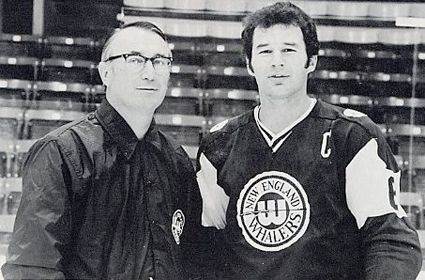

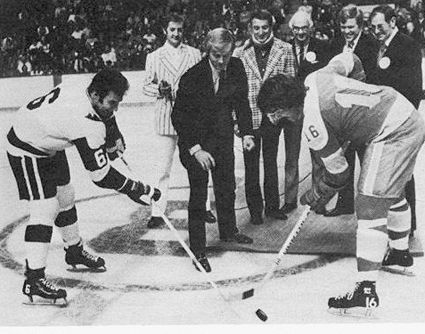
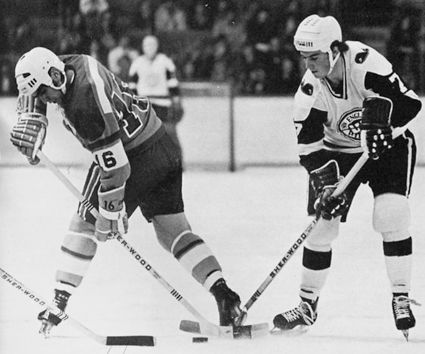
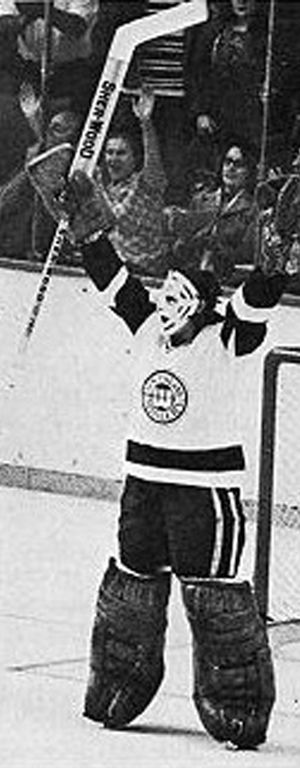
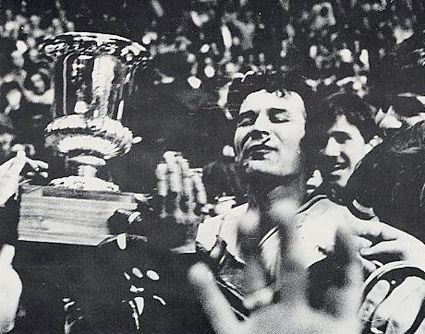
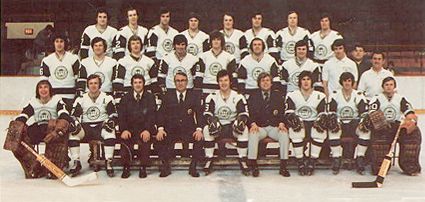
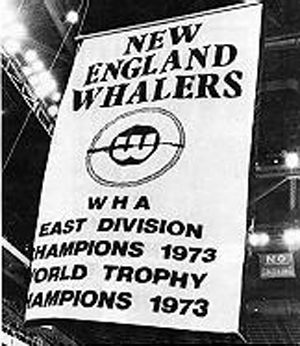
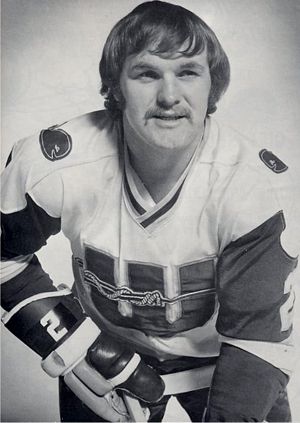
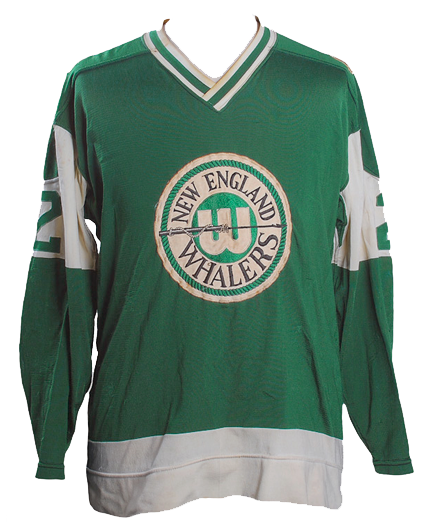

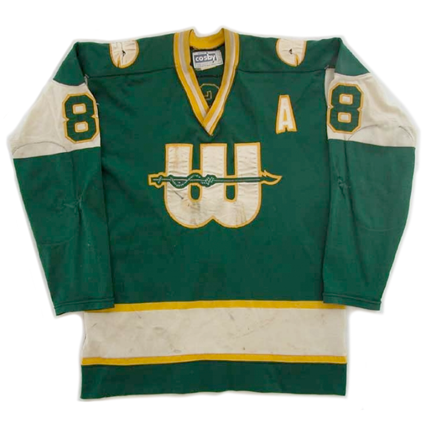
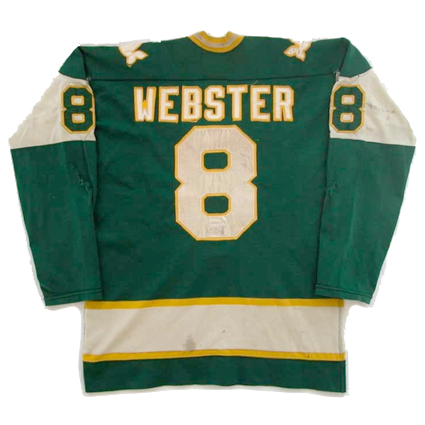










No comments:
Post a Comment
We welcome and encourage genuine comments and corrections from our readers. Please no spam. It will not be approved and never seen.